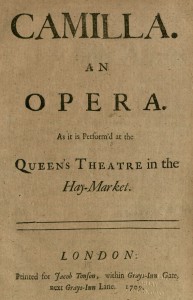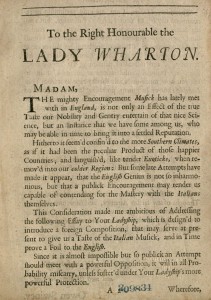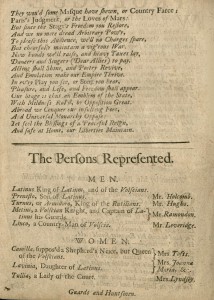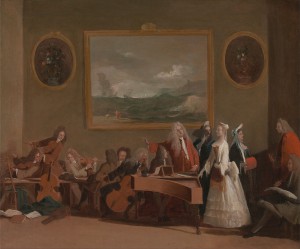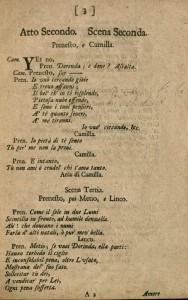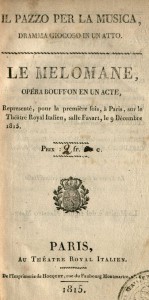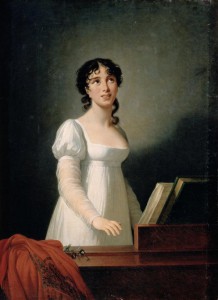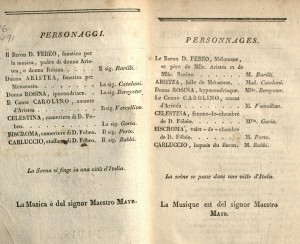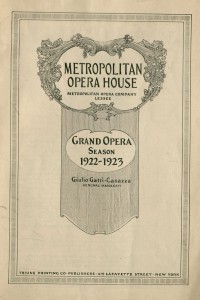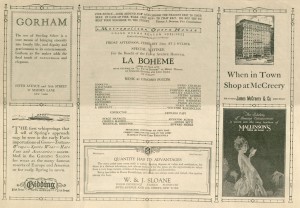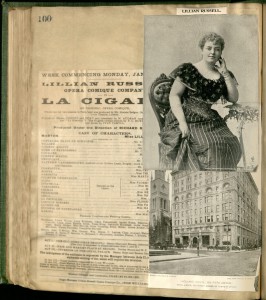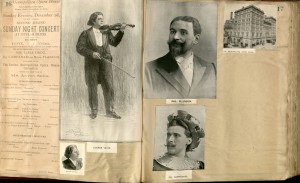After a recent trip to Cincinnati with three of my Special Collections colleagues to see Bizet’s Carmen performed at the Cincinnati Opera, I’ve begun to explore the wonderfully opulent world of opera. I’m quickly becoming enamored with this passionate and dramatic genre and I’ve also discovered the importance of not just the aural but the visual experience of opera. And as with many of my popular culture interests, I try to make connections with them and with my professional work in Special Collections. This regular practice of drawing connections between the present and the past, the personal and the academic, often informs my instruction to undergraduates and others, as well as my outreach activities. That’s the perk of working with large and varied special collections…there’s always something to interest you (and hopefully the public)! I thought I’d dedicate this blog post to highlighting a few items in the Walter Havighurst Special Collections that in a small way illustrate how printers and publishers enriched and reflected the opera goers’ experience over the centuries in three cities known for both their opera houses and their print culture.
Our first stop in our quick tour through three centuries of opera in print is a 1709 London printing of the libretto for Bononcini’s Camilla, performed at the Queen’s Theatre in the Hay-Market, printed by Jacob Tonson. The dedication to patron Lady Wharton by Owen Swiny, a successful theatre producer of the period, declares the popularity of Italian opera throughout Europe and the hope by Swiny that the English musicians may soon rival their Italian peers. Much like performance programs today the singers portraying the roles are identified in the pages of this pamphlet and this production featured the first popular English singer of Italian opera, Catherine Tofts, in the lead role. She is shown below in a painting entitled Rehearsal of an Opera by Marco Ricci from the same year as this production. This cheaply printed quarto also includes some early marginalia in the form of translations of the Italian text on some pages and was used by its contemporary owner to commemorate and enrich their opera-going experience.
The next stop on our tour is a little over a hundred years later in Paris with this libretto for a one act opera by Simon Mayr, a German-Italian composer, published by the Theatre Royal Italien in 1815. Though Italian operas often suffered in popularity compared to their homegrown French operas, imports like this piece in the opera-bouffon style were staged at the Theatre Royal Italien then under the direction of the Italian soprano Angelica Catalani. Indeed, Catalani (shown below in a portrait by the French artist Louise Elisabeth Vigee Le Brun) is listed as playing one of the principal roles. It is possible that this particular play was more popular than expected as the printed price on the title page has been revised higher and corrected in manuscript.
Our next stop takes us to early twentieth century New York where the enduring popularity of Italian opera is illustrated by this program for Puccini’s La Boheme from the 1922-1923 Metropolitan Opera season. From it’s premiere in 1896 to the present day, this romantic Puccini opera remains a popular one in the repertory and continues to inspire, most notably in the 1990 ground breaking production by stage and film director Baz Luhrmann and as the basis for the Pulitzer and Tony award winning musical, Rent, by Jonathan Larson.
The advertisements in this program are fascinating and include advertisements for the latest recordings of the opera stars of the day as well as services only wealthy opera goers would require, like special cleaning services for ball gowns!
And finally, an exciting recent donation to our collections by Allen W. Bernard are two scrapbooks of regional and international theatre and opera programs collected by a nineteenth century patron of the arts named Alice Bates between 1894-1897. We are delighted that Mr. Bernard thought they would find a good home here in Special Collections and I look forward to showing them off to music and theater students in the near future!
Though Special Collections does not have a particular collection strength in music history, these pieces demonstrate the breadth of our collections, especially for teaching purposes and are always great for a “quick peek” into the past.
Kimberly Tully
Curator of Special Collections

